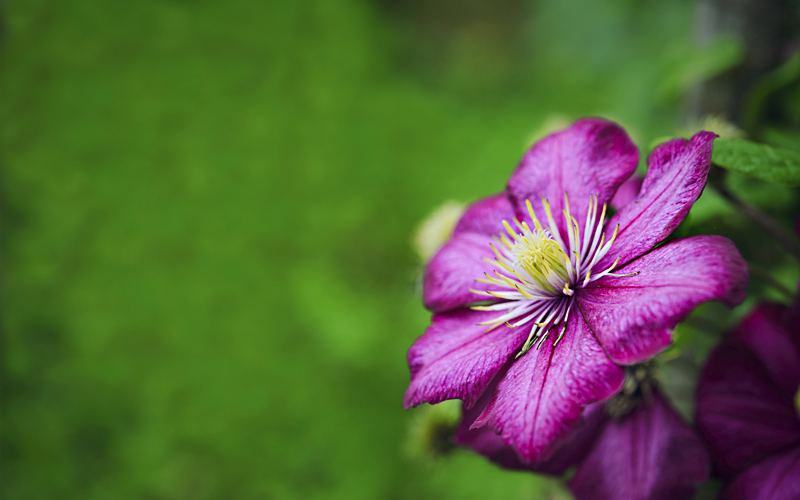A perfect match – Roses and clematis
Roses and clematis make a perfect partnership in borders or patio pots. Hannah Stephenson chooses some of her favourite combinations
There are some combinations that make life feel better – strawberries and cream, roast beef and Yorkshire pudding, gin and tonic…. but for me, one of the classic combinations which will always bring a heavenly note to summer is the pairing of clematis and roses.
They not only complement each other colour-wise, the rich blues and purples of the clematis contrasting beautifully with the colour palette of the rose, but they also enjoy similar growing conditions as both need a rich, fertile soil, regular feeding with fertilisers high in potash and nitrogen and plenty of watering during the growing season.
Early season clematis, such as C. alpina and C. macropetala, with their bushy habits, are naturally suited to training up and masking the bare stems of climbing and rambler roses.
Among the favourite combinations in my garden is the David Austin English rose, Rosa ‘Gertrude Jekyll’, which produces beautiful, blousy deep pink fragrant blooms in summer and the Clematis ‘Nelly Moser’, a soft pink-and-white candy striped hybrid which twines itself around the rose during the summer months.
Clematis can cling gently to other plants by twining their leaf stalks around other stems or supports and will not strangle a rose they are growing through.
When choosing a combination, the easiest option is to go for clematis that flower on the current season’s growth as these bloom in late summer and autumn and are pruned in late winter to early spring, at the same time as roses.
Some large-flowering clematis bloom in late spring and early summer on wood produced the previous year. These can be grown through roses but you need to prune them when their first flowers have faded, which you can do while you’re dead-heading the rose.
Early to midsummer-flowering types, including C. ‘Lasurstern’ and C. ‘Marie Boisselot’, benefit from being thinned to five or six shoots before they are tied into a rose. Fewer flowers may result but these will be larger and more evenly spaced, resulting in a more balanced display.
Effective contrasts include the mauve Clematis ‘Prince Charles’ with the soft yellow rose ‘The Pilgrim’. The clematis has fairly small blooms and suits the shorter habit of the rose. Clematis ‘Arctic Queen’, with its bold white flowers, sets off the delicate pink of Rosa ‘Cornelia’.
If you have a larger area to cover such as an archway or pergola, climbers are ideal for providing a living curtain of colour. The white blooms of the Rosa ‘Climbing Iceberg’ combine beautifully with the deep mauve blooms of Clematis ‘Lasurstern’, which will train over an arch to create both a visual showstopper and a fragrance sensation. Alternatively, Clematis ‘Romantika’ drips with amazing inky-purple flowers and makes a perfect companion for a pale climbing rose.
Some combinations work fantastically well in pots, especially on obelisks, which give their growth plenty of support, but you’ll need a really large pot because a climbing rose can make a lot of growth. Try matching Rosa ‘Snow Goose’, a small repeat-flowering rambler with fragrant pompom white petals, with C. ‘The President’, which bares deep purple flowers from late spring to early autumn.
Latest posts by Sally - Silversurfer's Editor (see all)
- Do you eat a chocolate digestive with the chocolate facing up or down? - April 24, 2025
- More to explore: A life positive journey after 50 - April 24, 2025
- Do you snore? - April 24, 2025
- UK ban on EU cheese and meat: What it means for you - April 19, 2025
- Would you support personalised health MOTs at retirement age? - April 19, 2025




















